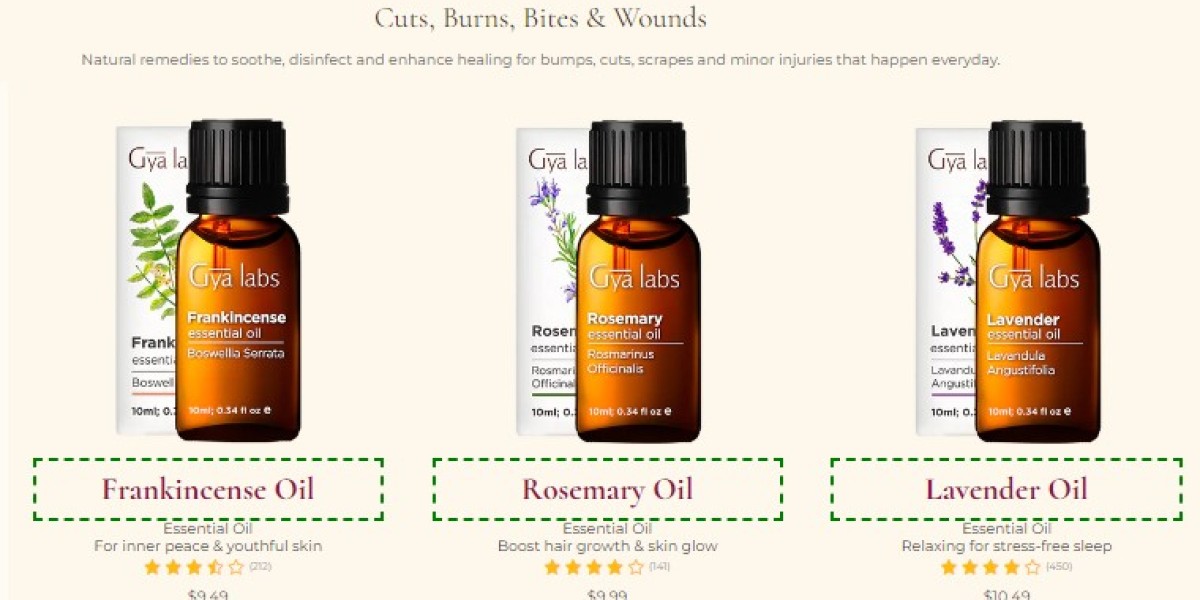Lavender oil has been used for centuries for its aromatic and therapeutic properties. Derived from the flowers of the Lavandula angustifolia plant, lavender oil has a fresh, floral, herbaceous scent that is both calming and uplifting. But beyond its pleasant aroma, lavender oil also has a number of medicinal benefits that are supported by scientific research. One of its most promising applications is in wound healing.
Lavender oil contains a number of active constituents including linalool, linalyl acetate, terpinen-4-ol, and camphor, all of which have been shown to contribute to its wound healing abilities. Here is an overview of the current research on how lavender oil supports wound healing and skin health.
Buy best carrier oil for wound healing here.
Reduces Inflammation and Oxidative Stress
Inflammation and oxidative stress play a major role in wound healing. While some level of inflammation is necessary to stimulate healing, excessive or prolonged inflammation can impede the formation of new tissue and increase scar formation.
Lavender oil has been found in studies to have both anti-inflammatory and antioxidant properties which can help regulate the inflammatory phase of healing and protect the skin from oxidative damage. Lavender oil has been shown to inhibit pro-inflammatory enzymes and cytokines as well as increase antioxidant enzyme activities when applied topically or inhaled.
Stimulates Collagen Synthesis
Collagen synthesis is an important process required for wound closure and tissue remodeling. Collagen provides strength and structure to new tissue.
In vitro studies have shown that lavender oil increases collagen production in fibroblasts, the cells responsible for producing this structural protein. Increased collagen synthesis in response to lavender oil may promote faster wound closure and enhanced tensile strength in healed skin.
Enhances Skin Cell Growth and Regeneration
The regeneration of new skin cells and tissues is crucial for healing wounds and burns. Lavender oil has been shown to increase the growth and migration of epithelial cells and fibroblasts in wound sites.
In one animal study, topical lavender oil increased cell proliferation and wound closure in diabetic rats. In another study, lavender oil accelerated wound contraction and epithelialization in burn wounds. The phytochemicals in lavender oil enhance regeneration at the site to speed healing.
Improves Angiogenesis
New blood vessel formation (angiogenesis) is necessary to provide nutrients and oxygen to developing tissue in a wound bed. Inadequate circulation impedes healing.
Studies have found that lavender oil promotes angiogenesis in wound healing through the activation of growth factor pathways. This enhanced vascularization helps improve tissue perfusion and healing in chronic, non-healing wounds.
Reduces Scar Formation
Hypertrophic scars and keloids can be problematic side effects of impaired wound healing. The anti-inflammatory, antioxidant, and cell regulatory activities of lavender oil have been shown to help reduce scarring after wounds heal.
One clinical study found that lavender oil decreased scar pigmentation and improved scar height and pliability compared to controls when massaged over healed wounds for 12 weeks. This indicates lavender’s ability to reduce excessive collagen deposits during tissue remodeling.
Protects Against Microbial Infection
Microbial colonization impedes healing and can lead to infection. Lavender oil has broad antimicrobial activities against common pathogens found in wounds including Staphylococcus aureus, Escherichia coli, and Candida albicans.
Applying lavender oil protects wounds from infection while aiding tissue repair and regeneration. Lavender oil may also synergize with conventional antimicrobial agents and help prevent antibiotic resistance when used together.
How To Use Lavender Oil for Wound Healing
Here are some evidence-based ways to use lavender oil to support different types of wounds:
Minor Cuts and Scrapes - After thoroughly cleaning the area, apply 2-3 drops of lavender oil mixed with a carrier oil like coconut or jojoba oil to the affected area 1-2 times per day until healed.
Burns - Lavender oil may help relieve burn pain and prevent infection. Mix 3-5 drops of lavender oil with 1 teaspoon carrier oil and gently apply around (not directly on) the burn 2 times a day.
Surgical Wounds - Add 4-6 drops of lavender oil to the bandage or gently massage around the closed incision to prevent infection and support healing post-surgery.
Diabetic Ulcers - Lightly massage 2-3 drops of lavender oil mixed with a carrier oil into the skin around the ulcer 1-2 times a day after cleaning. Monitor for any irritation.
Pressure Sores - Combine 3-4 drops each of lavender oil and eucalyptus oil with coconut oil and apply to the area around the sore to stimulate healing and prevent infection.
C-section Incisions - Apply 2-3 drops of lavender oil mixed with a carrier oil onto a fresh gauze pad and place over the closed incision to prevent infection and help healing.
Lavender oil has shown significant therapeutic potential for supporting wound healing through various mechanisms. Applying pharmaceutical grade lavender oil can help stimulate regeneration, prevent infection, and reduce scarring. However, be sure to dilute lavender oil with a carrier oil and monitor for irritation when using on open wounds. Consult a healthcare practitioner for proper usage and when in doubt. With its array of skin health benefits, lavender oil is a gentle, natural way to aid the healing process.






